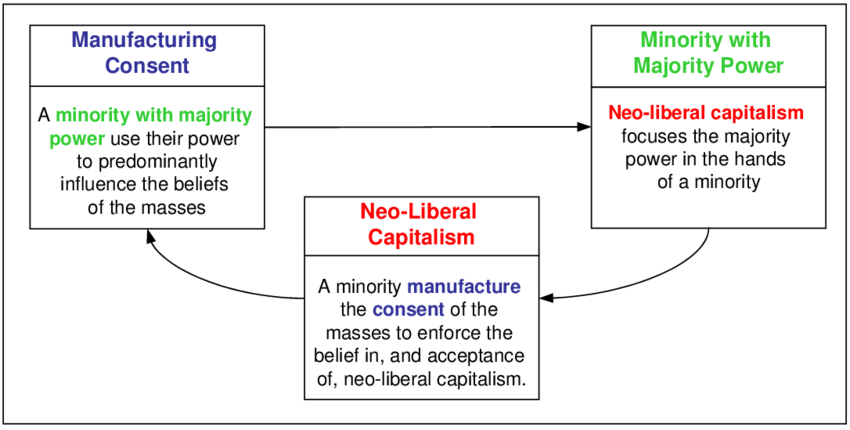In today’s media environment, the way information is presented can significantly influence public opinion. One notable example is media coverage of climate change, an issue where the stakes could not be higher. In the following, I will explain this phenomenon using the concept of “manufacturing Consent” developed by Noam Chomsky and Edward S. Herman.
Essentially, Manufacturing Consent argues that rather than being a direct source of information, the mass media often serves as a tool for promoting elite views. This process is accomplished through a variety of filters that determine which issues are highlighted and how they are presented. The media, especially those with a vested interest in the fossil fuel industry, routinely underestimate the seriousness of climate change. This underreporting is not outright denial, but a more insidious form of minimization. By not giving climate change coverage commensurate with its severity, these media outlets effectively shape public perception to make it seem less of a direct threat.Another tactic is to present climate change as a debate between two equally valid sides. This “false balance” creates a misleading narrative that the scientific consensus (representing over 97% of climate scientists) is on equal footing with a small group of skeptics, often funded by industry. This creates a sense of controversy and uncertainty that dilutes public urgency and support for decisive action.The media sometimes place environmental issues in direct opposition to economic growth. This dichotomy is particularly evident in media outlets that have close ties to industries that may be adversely affected by strict environmental regulations. Through this narrative, these media implicitly suggest that one cannot be pro-environment without being anti-economy, which is a false choice that influences public opinion against positive climate action.

Conclusion
The subtle and pervasive ways in which the media can shape public opinion on key issues such as climate change are classic examples of manufactured consent. By controlling the narrative, these outlets ensure that discourse is aligned with the interests of the powerful, often at the expense of truth and the public interest. Manufacturing consent is more than a theory;it’s a lens through which we can examine the information we consume every day. As consumers of media, it is critical to understand these tactics and seek information from a variety of sources. Understanding the concept of manufactured consent allows us to critically evaluate the information we consume and advocate for a more authentic and representative media landscape.
reference list:




This was an interesting read. I like how you highlighted that there are certain subtle and hidden ways through which the media effectively desensitises and minimises public agency. Particularly your example of climate change and the paradox that it created against the likes of economic growth and how this is used deliberately to undermine the urgency of climate change issues. I think through this example you were able to clearly articulate ideas about manufacturing consent and how it works in practice.